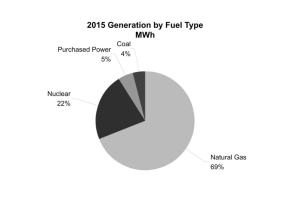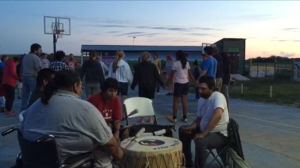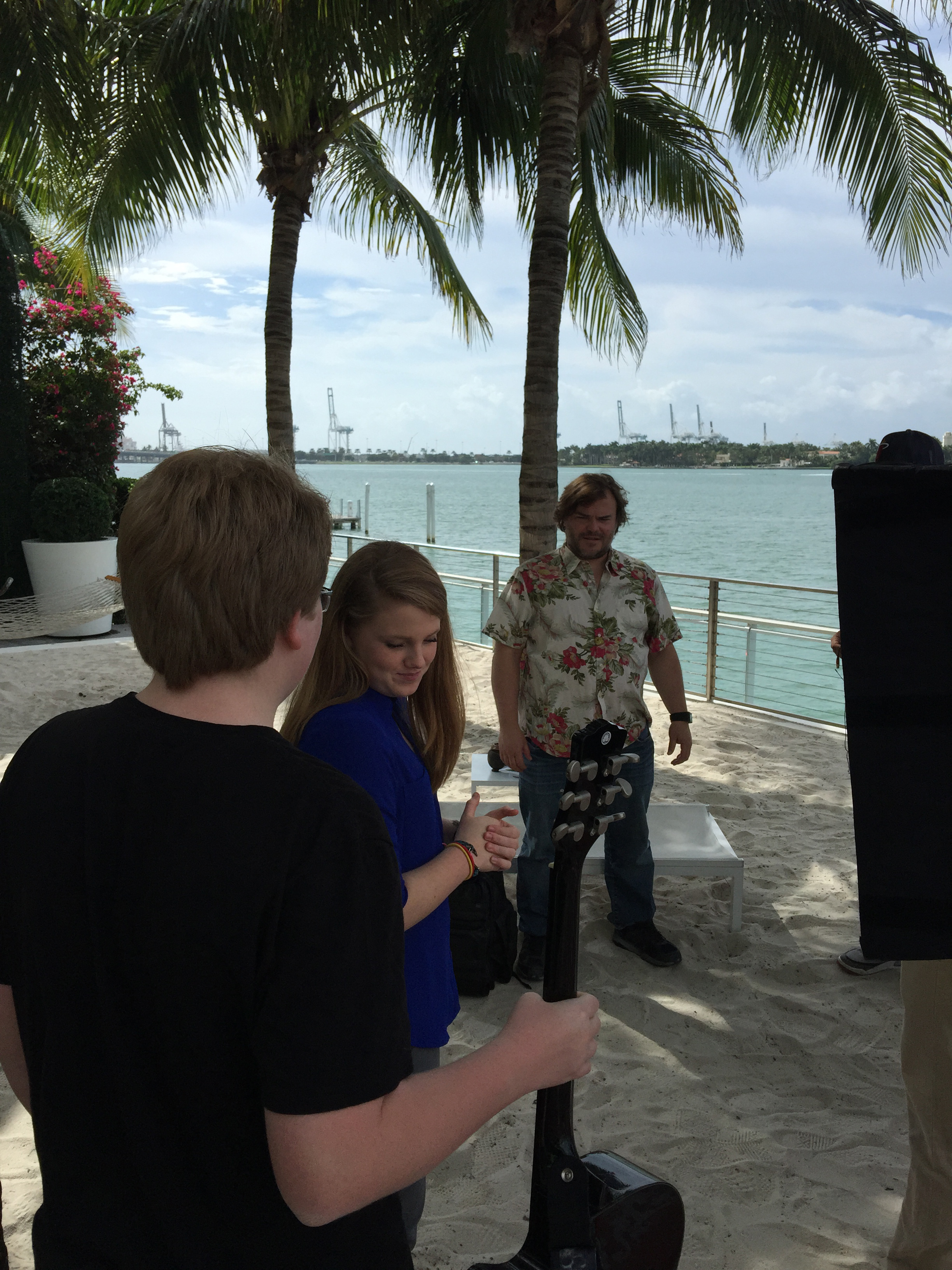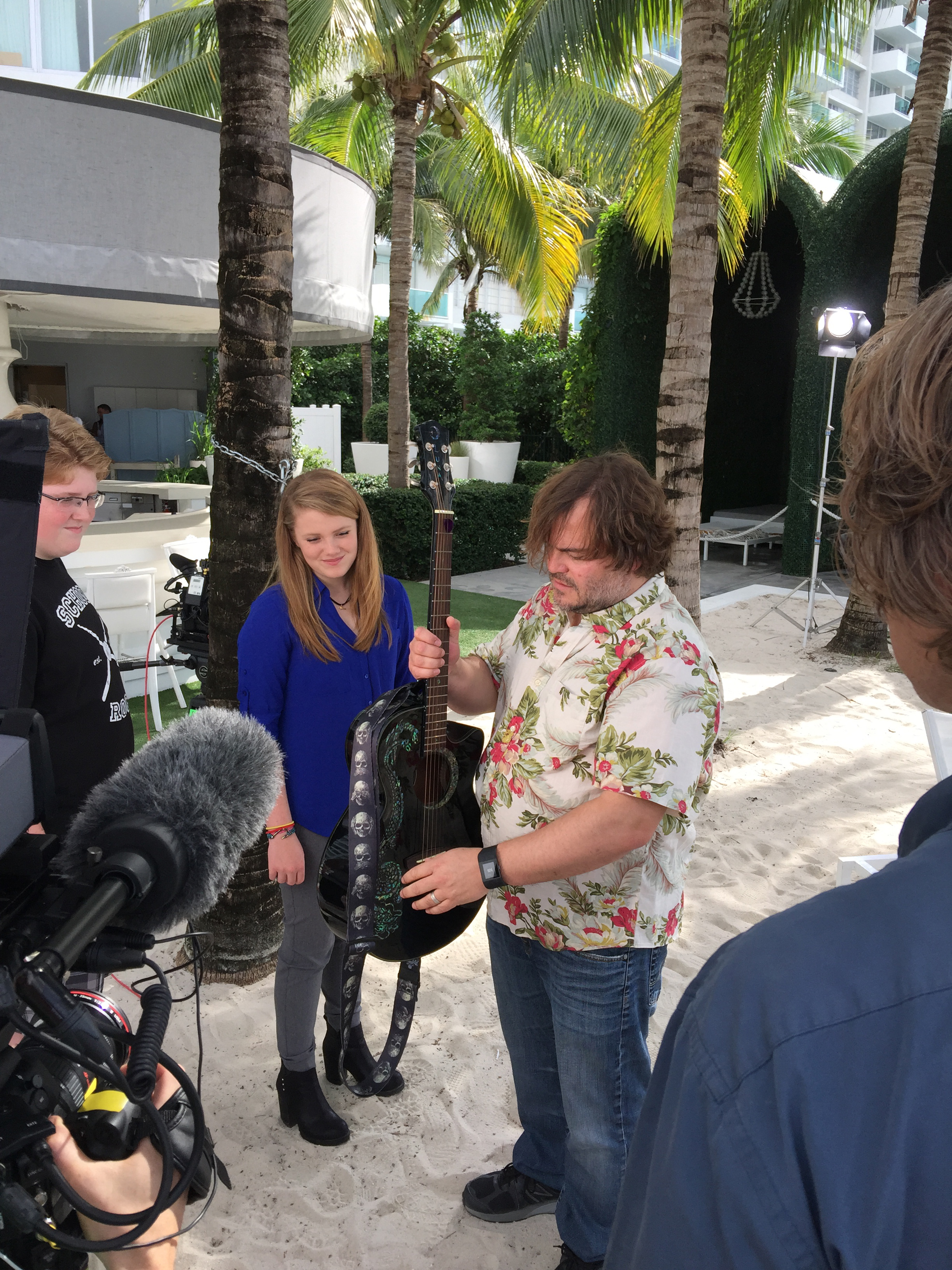“A wolf in sheep’s clothing…masquerading as a pro-solar initiative”
Florida Supreme Court Justice Barbara Pariente on Amendment One on Florida’s ballot
I am not yet old enough to vote this year so I desperately need your help. Please. I need you to vote NO ON AMENDMENT ONE to stop the deception Florida utilities are perpetuating on those of us who can vote. I need your help so we can grow solar power in Florida. PLEASE.
You see, my dream is to see solar power everywhere in Florida. It makes NO sense to me what-so-ever that ‘The Sunshine State’ is not already THE Solar State. Florida ranks as the state with the 4th highest potential to generate power from the sun yet we are 17th in actual solar production.
Experts concluded that 50% of all of Florida’s power needs could be generated from solar power by 2045, in just 29 years. Can you imagine the businesses and jobs that we can create in Florida, good paying, clean, sustainable jobs? Or how a real commitment to solar power would allow us to dramatically reduce our carbon pollution production? And for the consumer, there is the not so small fact that your solar system generates power from the sun that’s free.
So if you are asking yourself why Florida does not already produce far more power from the sun, you are not alone. But, then again, this year’s election has given us at least 40 Million examples of why Florida ranks so low. $40 Million dollars that is. That’s the estimated amount of money from power company profits (including our very own Florida Power & Light) that have been spent trying to deceive you into thinking that the proposed Amendment One somehow promotes solar. So why is it that the utility industry would spend such a large amount of money promoting Amendment One?
Well, simply stated, solar represents perhaps the only true competition the powerful monopolies that are our power companies have likely ever faced. And they are scared. Really, really scared that free, clean, power from the sun threatens their ridiculous profit margins and polluting ways.
In a few seconds I will prove to you that FP&L has virtually no interest in promoting solar power, but before I do that let me again urge you (beg you really) to please VOTE NO ON AMENDMENT ONE in Tuesday’s election. Do not let yourself be deceived and lied into thinking that Amendment One does anything to promote or expand solar power in our state. In fact, it’s exactly the opposite.
So, now, allow me to share with you what is really happening and why Florida Power & Light and their peers are trying to deceive voters this year.
First, the excellent work by Miami Herald reporter Mary Ellen Klas (click here to read one of her articles) has thankfully exposed their plot. Ms. Klas uncovered the boasts a senior official at something called the James Madison Institute made about how brilliant it is that the utilities and its Political Action Committee, the pro-solar sounding ‘Consumers For Smart Solar’, are in creating and touting Amendment One to deceive voters. Speaking at a power utility association meeting the electrical industry representative called the power companies creating and backing the proposed Amendment ‘incredible savvy maneuvers’. He then went on, she reported, to call the utilities’ deception an ‘act of political jiu-jitsu’ by, as she explained it, ‘attempting to deceive voters into supporting restrictions on the expansion of solar by shrouding it as a pro-solar amendment’. Thank you Ms. Klas for exposing what so many of us who advocate solar know; that the power companies have no interest in actually promoting solar power and, instead, see it as a threat to their profits and businesses.
Amendment One is a sham.
A farce.
A lie and an illusion designed by the electrical power industry to mislead voters. To trick you.
In fact, Floridians can already do everything the proposed Amendment suggests it ‘allows’. That’s right, we don’t need to change our Constitution to have a solar system permitted and installed or to operate safely or even to sell any extra power your solar system generates back to the power company. You can already do all of those things, but the utility industry wants to control and limit solar. That’s exactly the type of thinking that our state, country and world’s society must change if we are to ever change our ways and move away from the fossil fuels that pump carbon pollution into our air and oceans and that are warming our planet at alarming rates.
“This is deceptive in that all the things the advocates could say could happen with this Amendment can happen without this Amendment. You don’t need to have a constitutional amendment to have adequate regulatory power over solar. You don’t have to have a constitutional amendment to have safety.”
Bob Graham, Former Florida U.S. Senator and Governor
So why would Florida Power & Light, our state’s largest utility, spend an outrageous $22.2 Million to limit the use of solar power? Or for that matter Florida’s second largest, Duke Energy, spend $13.3 Million? Or our third largest Florida utility, Tampa Electric, spend $4.7 Million? All told, over $ 40 MILLION is being spent by Florida’s electrical power companies to tout the proposed amendment and when I think that that money comes out of the rates we pay them for power, all of this makes me terribly angry and sad. Yes, Florida electrical power company customers are paying for these companies to deceive us with our own money. That’s just disgusting.
What I have learned (including first hand in how hard my family had to fight to connect our solar home in the Florida Keys to the electrical grid so as to allow our excess solar power to benefit other customers and reduce their carbon footprint through net solar metering) is that the established power companies have little interest in creating, using, promoting or selling solar power. It’s just not what they do, or do well, and that certainly includes Florida Power & Light. FP&L, like the other power companies in their regions, operate as a monopoly. By law, FP&L and their parent, Next Era Energy (how funny is it that their name suggests a new era of power and they don’t even really support solar?) can’t have any competition and are entitled to make a profit by charging rates that the Florida Public Service Commission (PSC) approves.
If you are like me, you’ve read and seen a lot about FP&L in the media in recent years as they have;
- Lobbied the PSC to receive a significant rate increase to fund two new nuclear reactors at Turkey Point in South Miami Dade,
- As they have worked to avert a crisis from earths’ rising temperatures and the antiquated system they use to cool their two reactors,
- As they have been asked to address the public’s concern over the elevation of their Turkey Point plan’s equipment in a world of rising sea levels and
- As the public has learned that their Turkey Point plant has been leaking what we are told are ‘small’ levels of nuclear waste from its canal, water laced with a poisonous, radioactive, chemical called Tritium.
And perhaps you have the sense that FP&L likes to tout how much it loves solar power, yet their own website shows that they generate 3/5ths of 1%, barely more than 1/2 of 1%, of their power from solar systems. Here is what they say on their website (that’s their chart, note how little is from solar power, or ask yourself where power from the ‘wind’ or hydro power ranks):
 FPL uses a diverse mix of fuels at our power plants to generate reliable electricity. Because of our fuel mix, FPL is recognized as a clean energy company, with one of the lowest emissions profiles among U.S. utilities. FPL’s carbon dioxide emissions rate, for example, is 35 percent better than the industry average. FPL currently obtains most of our electricity from clean-burning natural gas. Nuclear power, which produces no greenhouse gas emissions, is responsible for another significant portion of power production. In addition, FPL has begun operation of three commercial-scale, emissions-free solar energy facilities in the Sunshine State.
FPL uses a diverse mix of fuels at our power plants to generate reliable electricity. Because of our fuel mix, FPL is recognized as a clean energy company, with one of the lowest emissions profiles among U.S. utilities. FPL’s carbon dioxide emissions rate, for example, is 35 percent better than the industry average. FPL currently obtains most of our electricity from clean-burning natural gas. Nuclear power, which produces no greenhouse gas emissions, is responsible for another significant portion of power production. In addition, FPL has begun operation of three commercial-scale, emissions-free solar energy facilities in the Sunshine State.
Need more evidence about how small the state’s largest utility’s commitment is to expanding carbon free power from our sun is? Well, in its 156 Page Annual Report FP&L’s parent company, Next Era Energy, explains FP&L’s sources of power on page 8 with the following chart:

That chart is followed by a footnote that reads as follows; ‘Oil and Solar are collectively less than 1%’.
I don’t know about you, but it sure does bother me that FP&L has lumped fossil fuel (Oil) in with Solar. Somehow they doing this in their own Annual Report helps illustrate the point about how little they value the power of the sun, but if that did not explain their lack of a commitment then page 10 of the same Annual Report’s section on solar power seems to make it clear;
Solar Operations
Solar generation can be provided primarily through two conventions: utility-owned and customer-owned or leased. In utility-owned solar generation, the energy generated goes directly to the electric grid, whereas customer-owned or leased solar generation generally goes directly to the location it is serving with any excess over that local need being fed back to the electric grid. There are two principal solar technologies used for utility-scale projects: PV and thermal. In December 31, 2015, FPL owned and operated two solar PV generation facilities, which provided a total of 35 MW of generating capacity, and a 75 MW solar thermal hybrid facility. FPL supports the advancement of solar generation primarily for its fuel diversity and emissions reduction benefits, and plans to continue to support, study and pursue solar generation that is beneficial for FPL’s customers. FPL is in the process of building three solar PV projects that are expected to provide approximately 74 MW each and be placed into service by the end of 2016.
Yeah, I bet there will be a lot more to ‘study’ before they change their business in a meaningful way and grow solar. The fact is that FP&L generates far less than 1% of its power from solar within a business whose net income in 2015 was $2,750,000,000 ($2.75 Billion!) versus $2,470,000,000 in 2014 or $1,910,000,000. In a place like The Sunshine State I’d think that the supposedly smart people at a ‘power’ company making all of these billions and growing like they have been would have been able to figure out how to generate much more clean (and free) power from the sun but, then again, what do I know?
What I know for certain is that solar power is a threat to FP&L and their peers and this election they have proven this to everyone by resorting to lying to voters. Their industry has given us over $40 Million examples of proof by their overt support of a deceptive, unnecessary amendment to Florida’s constitution that does nothing but protect their old fashioned ways and profits at the expense of our planet and your intelligence, much less your vote.
Please join me in putting a stop to the lies and by showing Florida’s power companies that we demand they shift to sustainable energy from places like the sun, wind and water. Please become informed about this deception and VOTE NO ON AMENDMENT ONE.




 FPL uses a diverse mix of fuels at our power plants to generate reliable electricity. Because of our fuel mix, FPL is recognized as a clean energy company, with one of the lowest emissions profiles among U.S. utilities. FPL’s carbon dioxide emissions rate, for example, is 35 percent better than the industry average. FPL currently obtains most of our electricity from clean-burning natural gas. Nuclear power, which produces no greenhouse gas emissions, is responsible for another significant portion of power production. In addition, FPL has begun operation of three commercial-scale, emissions-free
FPL uses a diverse mix of fuels at our power plants to generate reliable electricity. Because of our fuel mix, FPL is recognized as a clean energy company, with one of the lowest emissions profiles among U.S. utilities. FPL’s carbon dioxide emissions rate, for example, is 35 percent better than the industry average. FPL currently obtains most of our electricity from clean-burning natural gas. Nuclear power, which produces no greenhouse gas emissions, is responsible for another significant portion of power production. In addition, FPL has begun operation of three commercial-scale, emissions-free 









